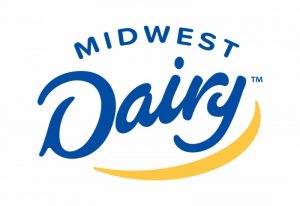
Buyers and sellers are scrambling to determine the future market impact as the virus spreads around the world, according to the latest RaboResearch Dairy Quarterly report titled “The Corona Hangover.”
Global milk production is rising, but reduced Chinese imports, supply chain disruptions and increasing dairy surpluses in export regions will put downward pressure on global markets through 2020, the report found.
Rabobank expects consumer buying in China to normalize by the second half of 2020, and some supply chains are already seeing improvement. The risk of a delayed economic recovery in China presents a major downward price risk to Rabobank’s current global dairy expectations.
As coronavirus continues to spread, industries across the globe are starting to evaluate the impact the outbreak will have on their businesses. Despite the increased demand for products as consumers stock up shelves for potential quarantines or to limit their trips to the grocery store, keeping up with that demand and securing the supply chain has not been an easy feat.
With more travel restrictions in place because of the risk of spreading the disease, exports both to and from China have been impacted, hurting the positive trajectory that dairy was on globally. Based on the forecast through 2020, Rabobank is predicting a down cycle in global dairy markets.
Although demand from China is beginning to recover after its virus exposure appears to have hit its peak, cases will likely continue to increase in the U.S. in the coming months. Rabobank lowered its 2020 U.S. demand growth projections from 0.8% to 0.5%.
Analysts are expressing concern over the slowing export demand for dairy, not because they see less consumer use, but because shipments need to go through more protocols and procedures to get to some locations around the world. This could back up supply and result in lower prices that could hurt the industry.
In the short term though, the demand for dairy could be a positive if suppliers are able to keep shelves stocked. Some dairy farmers are saying they have seen an increase in business as milk and yogurt is flying off the shelves. It will likely be challenging for producers to keep up with demand as the virus spreads. U.S. dairy operations could face a risk to their workforce if the virus is found in areas where farms are located. According to AgWeb, dairy operations should be thinking about that possibility and adding it to their crisis management plan.
Michael Dykes, president and CEO of the International Dairy Foods Association, said in a statement last week that the country’s dairy industry is experiencing no interruptions and is continuing to supply American consumers with products as demand surges.
“Our association is in close contact with federal agencies and the White House to ensure transportation routes and supply lines in different regions of the country remain free of disruption,” Dykes said. “These routes are crucial to commerce and public safety and must remain unobstructed.”
Analysts at Bernstein said consumption of shelf-stable and frozen packaged foods will temporarily increase as consumers are stockpiling goods and emptying grocery shelves. But the analysts did “not expect any material impact on U.S. food companies’ sales on a full-year basis at this stage.” This could mirror what happens in dairy where the industry sees a temporary boost in sales but no bigger positive impact on earnings in the long term.
The dairy industry has faced numerous ups and downs in recent years before the coronavirus even came into the picture. Two major milk producers have filed for bankruptcy in recent months as consumers turn to cheaper private label products, alternative beverage choices and plant-based options. As shoppers stock up, they are also turning to dairy alternatives. In the first week of March, oat milk sales were up 347.3%, according to Nielsen data.
It’s not just the dairy industry that is facing an impact from the virus. Representatives and analysts have said that the coronavirus threat may disrupt the beef and pork industries as they face worker shortages and demand issues.























